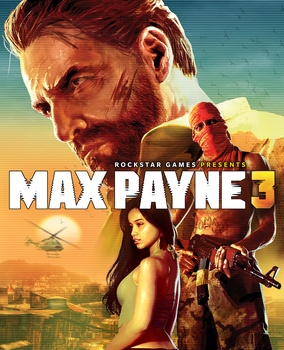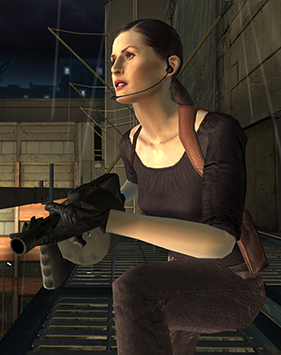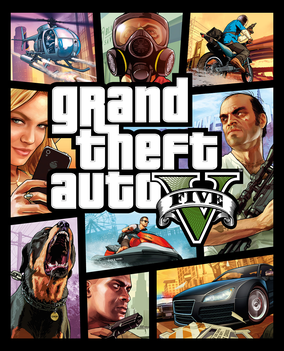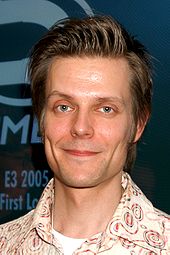
Max Payne is a 2001 third-person shooter game developed by Remedy Entertainment. It was originally released for Windows by Gathering of Developers in July 2001, and was later ported by Rockstar Games to the PlayStation 2 and Xbox in December 2001, and by MacSoft and Feral Interactive to Mac OS X in July 2002. A version of the game for the Game Boy Advance, featuring an isometric perspective but retaining most of the original's gameplay elements, was released by Rockstar in December 2003, and an enhanced port for mobile devices was published in 2012 to coincide with the release of Rockstar's Max Payne 3. A Dreamcast version of the game was also planned, but was canceled due to the discontinuation of the console in 2001. Max Payne was also made available on Xbox 360 as part of Xbox Originals program in 2009, on PlayStation 3 as a PS2 Classic in 2012, on PlayStation 4 in 2016, and on Xbox One and Xbox Series X/S in 2021, due to the consoles' respective backward compatibility and emulation features.

Max Payne 2: The Fall of Max Payne is a 2003 third-person shooter game developed by Remedy Entertainment and published by Rockstar Games. It is the sequel to 2001's Max Payne and the second game in the Max Payne series. Set two years after the events of the first game, the sequel finds Max Payne working again as a detective for the New York City Police Department (NYPD), while struggling with nightmares about his troubled past. After being unexpectedly reunited with contract killer Mona Sax, Max must work with her to resolve a conspiracy filled with death and betrayal, which will test where his true loyalties lie.

Remedy Entertainment Oyj, trading internationally as Remedy Entertainment Plc, is a Finnish video game developer based in Espoo. Notable games the studio has developed include the first two entries in the Max Payne franchise, Alan Wake, Quantum Break and Control. Sam Lake, Remedy's creative director, has represented the company on numerous occasions.

James Perry McCaffrey was an American actor best known for his voice role as Max Payne in the Max Payne video game series, Jimmy Keefe on Rescue Me (2004–2011), and Captain Arthur O'Breun in New York Undercover (1994–1997). He also had main roles and recurring roles in a number of television series as well as appearing in feature films.

Rockstar Games Toronto ULC is a Canadian video game developer and a studio of Rockstar Games based in Oakville, Ontario. The company was established as Imagexcel in the early 1980s and developed more than fifteen games under that name, including Quarantine, which was published by GameTek in 1994. The publisher bought the studio's assets through its Alternative Reality Technologies subsidiary in March 1995 and then sold Alternative Reality Technologies to Take-Two Interactive in July 1997. The studio became part of Take-Two's Rockstar Games label as Rockstar Canada in 1999 and was renamed Rockstar Toronto in 2002 when Take-Two acquired Rockstar Vancouver. Under Rockstar Games, the studio developed the 2005 game The Warriors, based on the 1979 film of the same name, as well as several ports, including the Windows versions of Grand Theft Auto IV, Grand Theft Auto: Episodes from Liberty City, Max Payne 3, and Grand Theft Auto V. In July 2012, Rockstar Vancouver was merged into Rockstar Toronto, which then moved into larger offices.

Sami Antero Järvi, better known by his pen name Sam Lake, is a Finnish video game writer and director. He is the creative director at Remedy Entertainment, known for his writing on the popular Max Payne video game series, and Alan Wake.

Max Payne 3 is a 2012 third-person shooter game developed and published by Rockstar Games. The game was released for PlayStation 3 and Xbox 360 on May 15, 2012; a Windows port was released on May 29, 2012, followed by an OS X port on June 20, 2013. It is the sequel to Max Payne 2: The Fall of Max Payne and is the third entry in the Max Payne series. It is also backwards compatible on Xbox One and Xbox Series X/S.

Bully is a 2006 action-adventure video game developed by Rockstar Vancouver and published by Rockstar Games. It was released on 17 October 2006 for the PlayStation 2. A remastered version of the game, subtitled Scholarship Edition, was developed by Mad Doc Software and released on 4 March 2008 for Xbox 360 and Wii, and on 21 October 2008 for Windows. Bully was re-released for PlayStation 4 available via PlayStation Network on 22 March 2016. An updated version of the Scholarship Edition, titled Anniversary Edition, was developed by War Drum Studios and released for Android and iOS on 8 December 2016.

Sam Houser is an English video game producer. He is a co-founder and the current president of Rockstar Games, and is one of the creative driving forces behind the Grand Theft Auto franchise, having been its producer since the third game. His brother Dan was Rockstar's vice president of creativity until 2020.

Rockstar New England, Inc. is an American video game developer and a studio of Rockstar Games based in Andover, Massachusetts. Ian Lane Davis founded the company as Mad Doc Software in November 1999 after working as technical director for Activision. The studio worked with Activision on Star Trek: Armada before leading the development of its sequel, Star Trek: Armada II. From 2002 on, Mad Doc was the principal developer of the Empire Earth series, developing two games and two expansions. While the successful Empire Earth II landed the company publishing contracts with Rockstar Games and Bethesda Softworks, Empire Earth III was a critical and commercial failure and led to an end for the series. Mad Doc developed Star Trek: Legacy for Bethesda Softworks and Bully: Scholarship Edition for Rockstar Games. After the latter was released in March 2008, Rockstar Games's parent company, Take-Two Interactive, bought Mad Doc and made it part of Rockstar Games as Rockstar New England. Under Rockstar Games, the studio worked on a sequel to Bully until its developers were reallocated to projects like Max Payne 3.

Rockstar Vancouver Inc. was a Canadian video game developer and a studio of Rockstar Games based in Vancouver. The studio is best known for developing Bully (2006).

The Rockstar Advanced Game Engine (RAGE) is a proprietary game engine of Rockstar Games, developed by the RAGE Technology Group division of Rockstar San Diego. Since its first game, Rockstar Games Presents Table Tennis in 2006, released for the Xbox 360 and Wii, the engine has been used by Rockstar Games' internal studios to develop advanced open world games for consoles and computers.

Mona Sax is a character in the neo-noir media franchise Max Payne, where she represents the femme fatale archetype. Mona is a mysterious contract killer in a dangerous relationship with the series' titular protagonist, the policeman-turned-vigilante Max Payne. The character was portrayed by Kathy Tong and voiced by Julia Murney and Wendy Hoopes in the video games, and was played by Mila Kunis in the film adaptation.

Daniel Houser is an English video game writer and producer. He is a co-founder of Rockstar Games, where he served as the head writer and vice president of creativity until his resignation in 2020. His brother Sam is the president of Rockstar.

Max Payne is a 2008 neo-noir action film based on the video game series of the same name developed by Remedy Entertainment and published by Rockstar Games. Directed and co-produced by John Moore and written by Beau Thorne, the film stars Mark Wahlberg as the title character, Mila Kunis as Mona Sax, Ludacris as Jim Bravura, and Beau Bridges as B.B. Hensley. The film revolves around revenge, centering on the New York police detective as he journeys through New York City's criminal underworld while trying to learn the truth behind the murder of his wife and child.
Max Payne is a neo-noir third-person shooter video game series developed by Remedy Entertainment and Rockstar Studios. The series is named after its protagonist, Max Payne, a New York City police detective turned vigilante after his family was murdered by drug addicts. The series' first and second installments were written by Sam Lake, while Max Payne 3 was primarily written by Rockstar Games' Dan Houser.

Grand Theft Auto V is a 2013 action-adventure game developed by Rockstar North and published by Rockstar Games. It is the seventh main entry in the Grand Theft Auto series, following 2008's Grand Theft Auto IV, and the fifteenth instalment overall. Set within the fictional state of San Andreas, based on Southern California, the single-player story follows three protagonists—retired bank robber Michael De Santa, street gangster Franklin Clinton, and drug dealer and gunrunner Trevor Philips, and their attempts to commit heists while under pressure from a corrupt government agency and powerful criminals. Players freely roam San Andreas's open world countryside and fictional city of Los Santos, based on Los Angeles.

A team of approximately 1,000 people developed Grand Theft Auto V over several years. Rockstar Games released the action-adventure game in September 2013 for PlayStation 3 and Xbox 360, in November 2014 for PlayStation 4 and Xbox One, in April 2015 for Windows, and in March 2022 for PlayStation 5 and Xbox Series X/S. The first main Grand Theft Auto series entry since Grand Theft Auto IV, its development was led by Rockstar North's core 360-person team, who collaborated with several other international Rockstar studios. The team considered the game a spiritual successor to many of their previous projects like Red Dead Redemption and Max Payne 3. After its unexpected announcement in 2011, the game was fervently promoted with press showings, cinematic trailers, viral marketing strategies and special editions. Its release date, though subject to several delays, was widely anticipated.



















